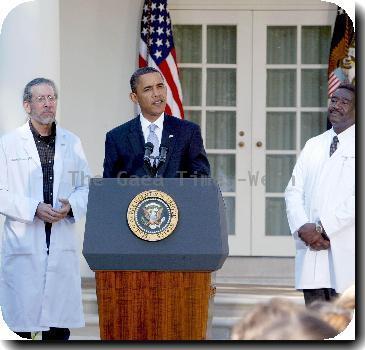Service sector shrinks and retail sales drop unexpectedly, ominous signs for recovery, jobs
By Tali Arbel, APThursday, December 3, 2009
Service sector activity, retail sales disappoint
NEW YORK — Further evidence that the economic recovery will be a slow and bumpy one emerged Thursday with reports that service sector activity and retail sales unexpectedly shrank in November as consumers held back on purchases.
The government did report one positive sign: New jobless claims dropped for a fifth straight week. But productivity gains in the third quarter showed that employers are managing to squeeze more work out of fewer workers. That’s an ominous sign for the nearly 16 million Americans looking for jobs — and for many others who fear losing theirs.
The government is expected to report Friday that employers shed 130,000 jobs in November and that the unemployment rate will remain at 10.2 percent. Companies have been laying off fewer workers. But they have yet to ramp up hiring, and the jobless rate is expected to expected to keep climbing into next year.
President Barack Obama kicked off a White House jobs forum on Thursday by saying he is “open to every demonstrably good idea” to reverse the rising tide of job losses. But with limited government resources, the private sector ultimately will have to lead.
“We have to be surgical and we’re going to have to be creative,” Obama said, appealing to his audience of academics, business and union leaders, and local officials to help him find “the biggest bang for the buck.”
Meanwhile, the Institute for Supply Management’s service sector index dropped to 48.7 from 50.6 in October. Analysts polled by Thomson Reuters had expected a level of 51.1. Any reading below 50 signals contraction. The service sector had begun growing in September for the first time in 13 months.
The ISM measure tracks more than 80 percent of the country’s economic activity, including such diverse industries as health care, retail, financial services and transportation.
The trade group said employment shrank for the 22nd time in the last 23 months, albeit at a slightly slower pace. Business activity shrank again after growing for the past three months and backlogs contracted. But new orders, a sign of future growth, continued expanding and prices rose.
The ISM’s service-sector gauge is closely watched because the sector includes more than 80 percent of non-farm U.S. jobs.
The report “underscores the difficult conditions facing the overwhelming majority of U.S. businesses,” said Josh Shapiro, economist at research firm MFR Inc.
Miller Tabak’s Dan Greenhaus cautioned that businesses may have a tough time passing higher prices on to wary consumers, perhaps weighing on their profits. That’s also not going to help companies add more jobs or boost salaries.
Stocks gave back most their earlier gains after the ISM report disappointed investors. The Dow Jones industrial average lost about 5 points in midday trading, and broader indexes were mixed.
Earlier this week, the ISM said its separate manufacturing index dipped to 53.6 in November from 55.7.
“For the moment, both indices remain at levels consistent with a continuation of the economic recovery,” Paul Dales of Capital Economics wrote in a research note. “But it is perhaps worrying that the strength of that recovery may be starting to fade so soon.”
The nation’s retailers suffered last month as a modestly positive start to the holiday shopping season couldn’t offset weak spending the rest of the month.
After posting two straight sales gains after more than a year of declines, merchants posted an unexpected 0.3 percent decrease for November, compared with a year ago. Last year at this time, business had plummeted to historic lows as spooked shoppers clamped down after the financial meltdown.
Employers, though, are cutting fewer jobs. Newly laid-off workers seeking unemployment benefits unexpectedly fell for the fifth straight week, the Labor Department said. First-time claims for unemployment insurance dropped by 5,000 to a seasonally adjusted 457,000, the lowest total since the week of Sept. 6, 2008.
The four-week average of claims, which smooths out fluctuations, dropped for the 13th straight week to 481,250, about 180,000 below the peak for this recession reached this spring.
That’s still above the 425,000 claims that many analysts say will signal new jobs are being created. But the ongoing decline means employers may start adding jobs within the next two months, economists said. The nation’s economy has shed jobs for 22 straight months, the longest stretch since World War II.
“The surprise further drop in jobless claims … is a very encouraging sign that the U.S. economy may be closer to the point of net job creation than we had thought,” John Ryding, an economist at RDQ Economics, wrote in a research note.
“Most indicators suggest that financial markets are stabilizing and that the economy is emerging from the recession,” Federal Reserve Chairman Ben Bernanke told Congress Thursday. “Yet our task is far from complete. Far too many Americans are without jobs, and unemployment could remain high for some time even if, as we anticipate, moderate economic growth continues.”
If confirmed to a second term, Bernanke pledged to help “restore prosperity and to stimulate job creation.”
The continued job cuts amid slowly growing business means employers must squeeze more out of the workers they have. The government also said productivity surged in the third quarter by the largest amount in six years, while labor costs fell.
The Labor Department revised its estimate of growth in output per hour of work to an annual rate of 8.1 percent in July-September period, the biggest jump since 2003, from an initial estimate of 9.5 percent. Unit labor costs fell at a 2.5 percent rate, less than the 5.2 percent plunge first reported.
That indicates inflation is remaining under control. But it also signals that workers’ wages are being squeezed, raising doubts about the durability of the economic recovery.
The Commerce Department reported last week that over the 12 months ending in October, wages and salaries, the most important component of incomes, fell 2.9 percent.
AP Retail Writer Anne D’Innocenzio in New York and AP Economics Writers Martin Crutsinger, Jeannine Aversa and Christopher S. Rugaber in Washington contributed to this report.
Tags: Barack Obama, Business And Professional Services, Holiday, Labor Economy, New York, North America, Recessions And Depressions, Retail And Wholesale Sector Performance, Service Sector Performance, United States, Us-economy

